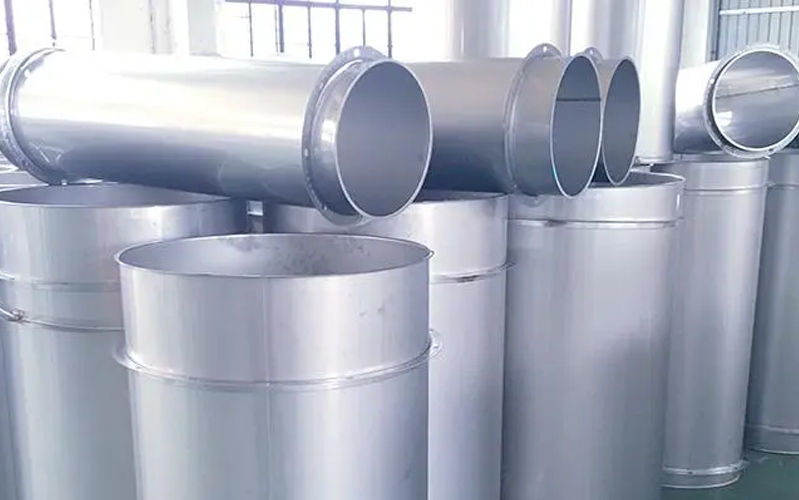The key to a successful conclusion in welding projects lies in a comprehensive understanding of the type of metal to be used and its respective welding procedures. Notably, there are significant differences between welding stainless steel and welding aluminum, making it crucial to specify the raw materials when requesting a quote from a metal fabricator.
Stainless steel welding and aluminum welding differ significantly from one another.
Welding Town
One fundamental distinction between stainless steel and aluminum is the presence of iron in ferrous metals like stainless steel, whereas aluminum is a non-ferrous metal and lacks iron. Additionally, these materials vary in weight and material strength, which must be taken into account during the selection process.
However, beyond the chemical composition, other essential factors come into play when deciding which metal suits your specific application. A thorough comprehension of the variations between welding stainless steel and aluminum, along with adherence to safe welding practices for each material, is of utmost importance.
By considering these crucial aspects, welders can make informed decisions and execute precise welding techniques, ensuring optimal results and the successful completion of welding projects involving stainless steel and aluminum.
Stainless Steel Vs. Aluminum: Durability
Undoubtedly, aluminum is weaker compared to stainless steel, but the added strength of stainless steel comes with a trade-off. Due to its density, steel is unsuitable for various applications as it weighs almost three times more than aluminum. On the other hand, though lighter, aluminum is more susceptible to dents, warping, and scratches.
Another critical consideration is the susceptibility to corrosion. Stainless steel’s non-porous nature, along with its chromium content providing exceptional corrosion resistance, makes it highly resilient against penetration by pollutants. In contrast, aluminum possesses more pores than stainless steel, making it more prone to rust when exposed to oxidation or acidic conditions, while stainless steel maintains its structural integrity.
When selecting the appropriate metal for a specific application, it’s essential to weigh these factors carefully. The choice between aluminum and stainless steel should be based on the specific requirements of the project, considering factors such as strength, weight, resistance to dents and scratches, and susceptibility to corrosion. A well-informed decision will ensure the successful and long-lasting performance of the chosen metal in the intended application.
It is important to note that stainless steel exhibits excellent heat resistance and can be used at high temperatures without warping. On the other hand, aluminum tends to become bendable when exposed to temperatures above 400 degrees. Consequently, when welding aluminum, it is essential to employ multiple braces to help the material maintain its shape, especially when precise tolerances are required. Conversely, aluminum retains its strength even at low temperatures, while stainless steel can become brittle under similar conditions.
Despite stainless steel often being more robust than aluminum, the latter can still be utilized in critical applications. Both stainless steel and aluminum can be relied upon as reliable building materials for metal manufacturing, provided they are appropriately designed and fabricated.
In conclusion, selecting the appropriate material for a specific project depends on various factors, including temperature requirements, mechanical properties, and the application’s specific demands. When properly handled, both stainless steel and aluminum can serve as valuable assets in metal manufacturing and contribute to the successful completion of a wide range of projects.
Stainless Steel Vs. Aluminum: Welding Techniques
Regardless of the metal used for a specific application, the expertise of a professional welder is indispensable. While it is true that aluminum is softer and more malleable, welding it requires sophisticated skills due to its unique chemical composition and properties.
Welding aluminum demands significantly higher heat inputs than steel, as aluminum conducts heat approximately five times more efficiently than stainless steel. Determining the ideal welding temperature for aluminum is quite challenging, and selecting the appropriate filler metal and shielding gas adds complexity to the process.
Improper welding temperatures on aluminum can result in weak seams due to porosity-related cracking or insufficient penetration in the finished weld. Such porosity might not be visible to the human eye and may only be revealed through examinations. Repairing a faulty weld can be time-consuming and labor-intensive, underscoring the importance of getting it right the first time. On the other hand, stainless steel is comparatively easier to weld since it exhibits fewer variations and requires less heat input.
In conclusion, both aluminum and stainless steel welding demand specific expertise, but aluminum welding, in particular, poses unique challenges due to its properties. Professional welders with comprehensive knowledge and experience can ensure that welding projects, regardless of the material used, meet the highest standards of quality and integrity.
Stainless Steel Vs. Aluminum: Welding Cost Differences
Both aluminum and stainless steel can be affected by supply chain disruptions and price volatility, as witnessed during the epidemic. However, in general, aluminum tends to cost less per pound than stainless steel, providing better value for money due to its lower initial weight. To achieve the required strength for welding projects, additional aluminum material may be needed. Furthermore, shipping aluminum products can be more cost-effective than shipping steel products due to aluminum’s lighter weight.
As mentioned earlier, welding aluminum requires extensive training, which can contribute to higher costs compared to welding stainless steel. However, despite the potential higher costs of aluminum welding, its overall cost-effectiveness and versatility in various applications make it a valuable choice for many metal fabrication projects. Both aluminum and stainless steel have their unique advantages and challenges, and the choice between them depends on specific project requirements, budget considerations, and the expertise of the welder.
Common Uses For Aluminum And Stainless Steel Welding
Here are some specific industries where each material is utilized, taking the characteristics of aluminum and stainless steel into account. There are various advantages of stainless steel for fabrication projects. Be aware that depending on its function and application, you can employ either in some situations.
Stainless Steel Industries:
Construction: Stainless steel’s durability and corrosion resistance make it an ideal choice for constructing buildings, bridges, and infrastructure that require long-term reliability.
Food and Beverage: Stainless steel’s hygienic properties and resistance to corrosion make it widely used in food processing equipment, storage tanks, and commercial kitchen fixtures.
Medical and Pharmaceutical: Stainless steel is utilized in medical devices, surgical instruments, and pharmaceutical equipment due to its biocompatibility and easy sterilization.
Aerospace: The high strength and resistance to extreme temperatures and chemicals make stainless steel components valuable in aircraft and aerospace applications.
Automotive: Stainless steel is used in various automotive parts, such as exhaust systems, fuel tanks, and body panels, due to its strength and resistance to corrosion.
Aluminum Industries:
Transportation: The lightweight nature of aluminum makes it an excellent choice for manufacturing aircraft, automobiles, and trains, reducing fuel consumption and improving efficiency.
Packaging: Aluminum’s malleability and ability to resist corrosion make it a popular material for packaging, including cans and foils.
Marine: Aluminum’s corrosion resistance and low maintenance needs make it suitable for building boats, marine components, and offshore structures.
Electronics: Aluminum’s conductivity and heat dissipation properties are beneficial in electronic devices, heat sinks, and electrical enclosures.
Construction: Aluminum is used in lightweight structures, such as facades and curtain walls, where reducing the overall weight of the building is essential.
In certain cases, both aluminum and stainless steel can be used interchangeably based on specific project requirements and desired characteristics. It’s essential to evaluate the unique features of each material to determine the best fit for a particular application in various industries.




![12 Different Types of Welding Processes [The Definitive Guide] 6 12 Different Types of Welding Processes [The Definitive Guide]](https://www.021208.com/wp-content/uploads/2025/01/12-Different-Types-of-Welding-Processes-The-Definitive-Guide-150x150.jpg)






